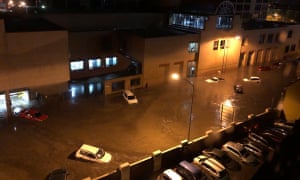As announced by the Department of Finance (DOF), the Philippines urges fellow members of the Association of Southeast Asian Nations (ASEAN) to create a region-wide database on disaster risk management.
The region-wide database on disaster risk management among the ASEAN proposed by the Philippines would allow the sharing of information on mitigating the effects of climate change and guarantee timely assistance during calamities.
DOF Secretary Carlos Dominguez III mentioned that the Philippines is spearheading the proposal by communicating with the private sector to enable better coordination in times of catastrophes and other crises even though there are “existing capacity constraints”.
During a recent joint meeting in Singapore, Sec Dominguez, his fellow finance ministers and the central bank governors in the ASEAN stressed the significance of strengthening their countries’ resilience in facing calamities.
The ASEAN Finance Ministers and Central Bank Governors, in a joint statement after the 4th ASEAN Finance Ministers’ and Central Bank Governors’ Meeting, said that the resilience of its member-states “is important for sustaining growth as well as protecting our people’s well-being.”
Moreover, “We note the ongoing ASEAN Disaster Financing and Insurance (ADRFI) initiatives to enhance the region’s capacity to adopt and implement ex-ante and ex-post disaster risk management measures. Cambodia, Laos and Myanmar are working together to launch the Southeast Asia Disaster Risk Insurance Facility (SEADRIF) as a disaster risk management solution for the region.”
Sec Dominguez said that an urgent need to implement disaster risk management measures to protect the country’s vulnerable communities against climate change is brought on by the irreversible damage caused by the inconsistent weather patterns.
“Within the existing capacity constraints, we are building databases and constantly improving on the quality and amount of data available to identify vulnerabilities and manage risks,” Dominguez shared.
“This is a continuing effort,” Dominguez noted. “Down the road, we are encouraging our partners in the ASEAN to participate in building a region-wide database for disaster risk management and possibly institutional structures that will enable timely cooperation in the face of calamities.”
Other efforts are being put up by the Philippines to counter natural disasters.
(1) Digitise government assets and infrastructure
(2) Push legislation that will institutionalise disaster risk financing strategies like reinsurance and government-sponsored risk pools to assist communities in the event of catastrophes.
The most vulnerable local government units (LGU) in the country are now undertaking preliminary studies for a parametric insurance scheme, he furthered.
Green Jobs Act (Republic Act 10771), enacted 2 years ago, provides government incentives for the creation of environment-friendly jobs, usually those that preserve the quality of the environment, decarbonise the economy, protect ecosystems, reduce pollution and restore biodiversity. These incentives include tax deductions and the exemption of capital equipment from customs duties.
Sec Dominguez was the former environment minister during the term of the late President Corazon Aquino.
“Programs such as this one support the general effort to encourage our enterprises to adopt sustainable business practices. When they comply with benchmarks set for sustainability, businesses qualify for insurable risks. Such incentives will go a long way towards building a more environmentally sensitive national economy.” he said.
He added, as stated in the joint statement, the regional bloc has already initiated a program to coordinate the sharing of disaster risk financing, with its first phase completed in June 2017.
Funding support for the region wide disaster risk insurance facility will come from the German development institutions GIZ and KfW. This initiative is “a pioneering ASEAN project that could be adopted in other parts of the world,” Dominguez explained.
“The countries of this region are stepping up to the challenges facing us today. The ASEAN itself has become a mechanism for disaster risk mitigation on a broader level. This is as it should be,” he noted.
“Typhoons, earthquakes and volcanic eruptions take a toll on our communities and on our economy. We are spending billions of pesos flood-proofing our most vulnerable areas in the face of more torrential rains. Building for a sustainable and resilient development is more than just an option for us. It is the only way to go,” he said.





